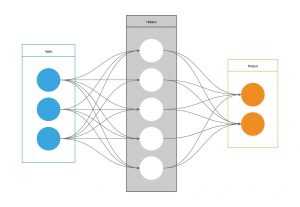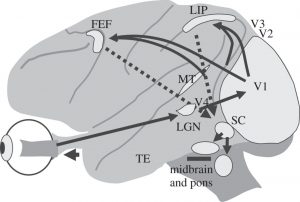Did you know that artificial neural networks (which are computing systems) can process information in a similar way compared to the human brain? According to a study this month from the journal Current Biology, “artificial neural networks can perceive 3D objects in the same first-glance way our brains do”.

A diagram depicting the basic structure of an artificial neural network. Source: Wikimedia Commons
That being said, after all humans do use organic brains to model artificial neural networks. Therefore, it should not be groundbreaking news that such networks somewhat resemble natural brains. Well, at least not until they become similar in ways which we have not designed them to be.
Let’s start with explaining more about the human brain. It processes visual information through several sections, with each part combining different perceived properties of an object to create a full image. Scientifically, this is how we view and perceive objects.
However, the aforementioned study shows how neurons in the V4 area (the first section in the brain’s object vision) also represent 3D shape fragments, and not only 2D shapes as previously thought. According to TechXplore, this is a significant finding because it is opposite to the general scientific consensus for the last 40 years.
During this same research, scientists noticed something they did not expect: the same 3D patterns the brain utilizes to see are also used in an artificial neural network. As stated by Futurism, this was noticed upon looking further into the AlexNet algorithm (an advanced computer vision network).
Ed Connor, a Johns Hopkins University neuroscientist, discovered very similar natural & artificial neuron image response patterns in AlexNet’s layer 3, and the V4 section in the brain. He was “surprised to see strong, clear signals for 3D shape” as soon as the brain’s V4 section. However, it was even more shocking that the AlexNet algorithm also had such signals for 3D shapes. That’s because the algorithm had been solely designed to convert 2D photographs to object labels.

This shows how visual information is transferred through different sections of the human brain. Source: Wikimedia Commons
According to Connor, artificial networks are currently the most promising models for learning about the human brain. On the flip side, the brain contains the most reliable source of strategies for bringing artificial intelligence closer to natural intelligence.
This latest research hints at the new standard for artificial intelligence research. Rather than taking the traditional method of utilizing information known about the brain to build computers, researchers now take a reverse approach.

This image depicts how there are growing similarities between natural and artificial intelligence. Source: Pxfuel
– Jacqueline (Wai Ting) Chan
